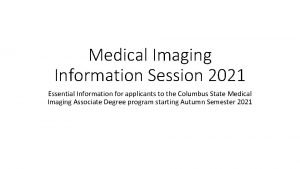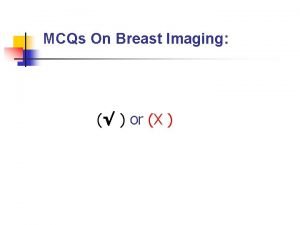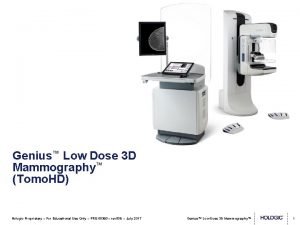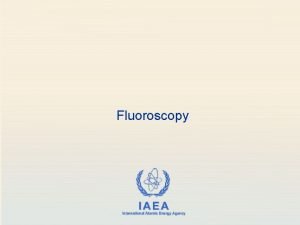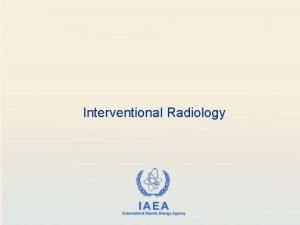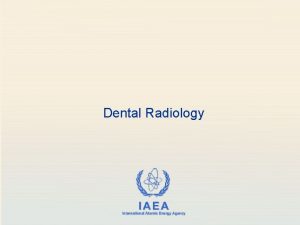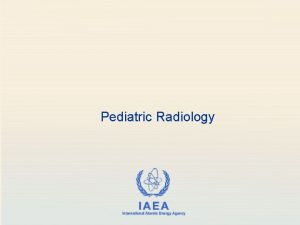Mammography Authorization and Inspection of Radiation Sources in









- Slides: 9

Mammography

Authorization and Inspection of Radiation Sources in Diagnostic and Interventional Radiology Module 2. 7 Objective • To become familiar with mammography x-ray systems. • To become familiar with specific radiation risks associated with this equipment. 2

Authorization and Inspection of Radiation Sources in Diagnostic and Interventional Radiology Module 2. 7 Contents • Description and physical characteristics of mammography systems. • Equipment malfunction affecting radiation protection. • Criteria of acceptability and quality control. 3

Authorization and Inspection of Radiation Sources in Diagnostic and Interventional Radiology Module 2. 7 Mammography is presently the most reliable method for detecting lesions in the breast. It: • requires high standards of image quality and equipment performance because the contrast between normal and pathological areas in the breast is extremely low; • is performed on symptomatic (medically referred) patients as well as on asymptomatic women who satisfy selection criteria for approved breast cancer screening programmes. Such programmes are common in many countries. 4

Authorization and Inspection of Radiation Sources in Diagnostic and Interventional Radiology Module 2. 7 Specific requirements Mammography shall be carried out using dedicated, special purpose x-ray equipment with: • generators capable of relatively low x-ray tube potentials: e. g. 25 -30 k. V peak; • x-ray tubes with a molybdenum or rhodium target (anode) and Mo or Rh filtration. In modern mammography units different anode / filter combinations are available; • the use of an anti-scatter grid and automatic exposure control (AEC) system are strongly recommended. 5

Authorization and Inspection of Radiation Sources in Diagnostic and Interventional Radiology Module 2. 7 Specific requirements (cont) • Radiolucent breast compression device - the application of firm compression to the breast during mammography provides immobilisation, reduces tissue thickness and ensures greater uniformity in thickness. Compression contributes to improved image quality by minimizing blurring and by reducing both the exposure required and the intensity of scattered radiation. • A standard breast phantom approximating an average breast (designed to standard specifications) for equipment performance checks and estimation of the mean glandular dose (MGD). 6

Authorization and Inspection of Radiation Sources in Diagnostic and Interventional Radiology Module 2. 7 Mammographic Equipment X-RAY TUBE ASSEMBLY OPERATOR’S PROTECTIVE SCREEN Mammographic x -ray equipment COMPRESSION PLATE IMAGE RECEPTOR 7

Authorization and Inspection of Radiation Sources in Diagnostic and Interventional Radiology Mammographic Equipment (cont) Module 2. 7 Mammographic tomosynthesis equipment 8

Authorization and Inspection of Radiation Sources in Diagnostic and Interventional Radiology Module 2. 7 Malfunctions affecting radiation protection Basically the same as for general x-ray systems (see Modules 2. 1, 2. 2 and 2. 3) but tests performed and measuring instruments used must be adapted to the characteristics of mammography systems, e. g. • inaccuracy and inconsistency of the x-ray tube voltage and radiation output; • misalignment between the x-ray beam and the image receptor, non-uniformity of the x-ray field; • unsatisfactory film storage conditions, image development and viewing conditions • improperly calibrated AEC, etc. 9


